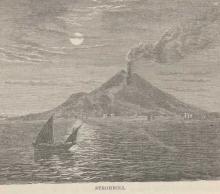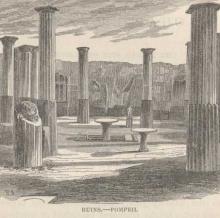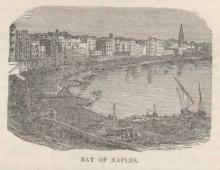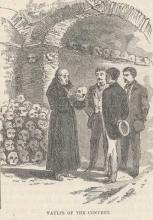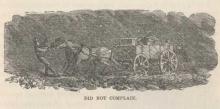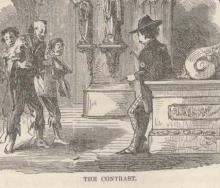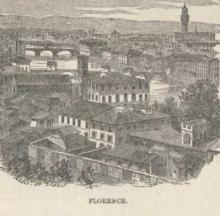Mark Twain and the pilgrims are all back on board the Quaker City, depart Naples, and head for Greece. They arrive at the harbor of Piraeus and are told they will be in quarantine for eleven days or they must leave. It is a great disappointment to the passengers to miss Athens and several attempt to break the quarantine. They slip ashore during the night. Twain makes the run to the Acropolis with three others and view Athens from above in the moonlight. They make it back to the ship followed by dogs and various grape growers with muskets.
This chapter has been produced using a different video software program, Openshot. This is an improvement for me because it allows a video preview synced with the audio. Previously I've always had to calculate the start and end times for clips by following the text while playing the audio in audacity. This program also allows me to combine video clips with still images. Technically I could do that with PiTiVi but the results often failed during export. Anyway, chapter 31 is Mark Twain's visit to Pompeii.
Mark Twain finds fault with the Neapolitan people but appreciates Naples from a distance, from the side of Mt Vesuvius.
Mark Twain and a few other of the Pilgrims had decided not to sail to Naples aboard the Quaker City as they knew it would be put in quarantine there. They took the train from Rome. While the quarantine existed they enjoyed teasing those stuck aboard. Along with this amusement they frolicked on the island of Ischia, climbed Mt Vesuvius and visited the opera. In this chapter he is quite critical of the peoples of Naples and of a town he calls Annunciation, at the foot of Mt Vesuvius, although I can find no reference to this town.
The pilgrims visit the rather macabre Capuchin Crypt, wherein the bones of deceased monks of the order are used as a sort of sculptures. It is said they are not meant tio be macabre but as " a silent reminder of the swift passage of life on Earth.". Twain also remarks that there are few art works of historical events in Rome, except for the Rape of the Sabines. This is my second attempt to use Blip.tv as a platform for serving the video slide shows. It should be automatically linked to a YouTube version as well.
I've switched to a new video service, blip.tv. It's my hope that it will provide a wider promotion field for these videos. This particular chapter contains a story from Twain's Roughing It days about a young lawyer named Oliver. We also learn of the strategy employed by our pilgrims in dealing with tour guides, also known as the Fergusons.
Huck can't seem to shake the king and the duke and soon discovers the king has sold Jim to a farmer . He must decide what to do about it. Should he write back to Miss Watson, Jim's owner, or try and steal him back again.
This is a particularly long chapter covering several interesting topics. Twain begins by discussing the phenomena of discovery, giving several examples throughout history, and saying it confers the greatest of pleasures. He then provides a portrait of America through the ideas of an invented modern Roman. Twain then takes us on a visit to St Peters Cathedral. He is nearly over whelmed by it's size. He follows this with a discussion of the difference between Roman "barbarians" who threw Christians to the lions versus the enlightened Christians and their Inquisition.
This chapter is not so much about a location in Italy but about the extremes of "magnificence and misery" found here. He is particularly critical of Florence and the Medici family. And, again he criticizes to "old masters". "... but I keep on protesting against the groveling spirit that could persuade those masters to prostitute their noble talents to the adulation of such monsters as the French, Venetian and Florentine Princes of two and three hundred years ago, all the same.
Mark Twain travels through Bolognia, Pistoia, and into Florence. Because of the fatigue from the journey as well as the distain he feels for Florence's treatment of Galileo and Dante, he does not speak highly of Florence. Apparently, some years in the future he does change his mind about the place as he chooses to live there for some time, at least circa 1902. He writes of the mosaics and the maltreatment received by the artists, or "pensioners". He then travels to Pisa and climbs the Leaning Tower. Twain writes of the "old original patriarchal Pendulum--the Abraham Pendulum of the world".
Subscribe to
© 2025 B Scott Holmes, All rights reserved.
